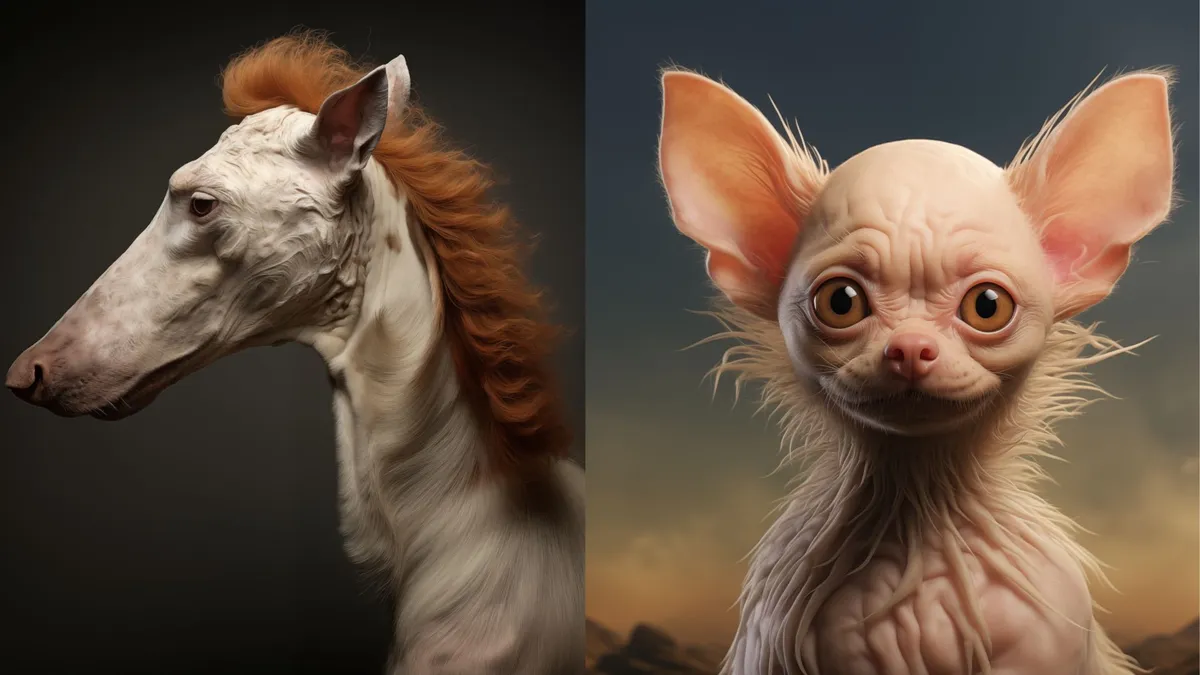In an innovative collaboration between Basepaws, a California-based pet genetics testing company, and renowned veterinarian Ernie Ward, the realm of canine evolution has been propelled into the future using the power of artificial intelligence. Through the input of insights into neural networks, these veterinary experts have crafted intriguing visualizations, offering a glimpse into the potential evolution of dog breeds over the next 10,000 years.
Rooted in the historical alliance between dogs and wolves, a partnership firmly ingrained and projected to persist into the distant future, the project explores two distinct evolutionary scenarios influenced by global climate changes.
- Global Warming Scenario: Adapting to a Changing World
In a future shaped by global warming, where climate shifts impact the relationship between humans and dogs, renowned veterinarian Ernie Ward envisions fascinating adaptations. With resource scarcity potentially leading to a reduction in canine body mass, smaller-sized bodies may become more prevalent, requiring less food and energy and proving more adaptable to heat.

This scenario predicts changes in skin surface, possibly resulting in darker tones to protect against harmful ultraviolet radiation. Rising temperatures could prompt dogs to shed their fur, become more nocturnally active, and develop larger heads and ears for efficient cooling. Metabolic adaptations may enable canines to endure longer periods without rehydration in the face of water scarcity.
- Ice Age Scenario: Adapting to a Chilling Environment
Conversely, in a scenario where the world experiences a new Ice Age, dogs are anticipated to evolve thicker and denser fur for insulation. The impact of colder temperatures on dog size remains uncertain, but an increase in body fat is foreseen to serve as an energy reservoir for survival.
This evolutionary path might lead to more wolf-like characteristics, featuring stronger muscles essential for hunting and running. In extreme cases, these adaptations could potentially challenge the human-canine friendship as dogs compete for resources like food and shelter.
The scope of this exploration doesn’t stop at our planet; it extends into the cosmos, contemplating scenarios that might unfold if humanity succeeds in creating habitable zones on other planets.
As we delve into the future of canine evolution through the lens of artificial intelligence, these imaginative scenarios provoke thought about the resilience and adaptability of our faithful companions in the face of environmental changes. The evolution of man’s best friend takes on new dimensions as we consider the potential challenges and triumphs that lie ahead in the ever-evolving story of dogs and humans.




